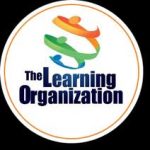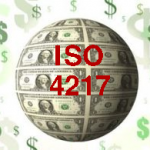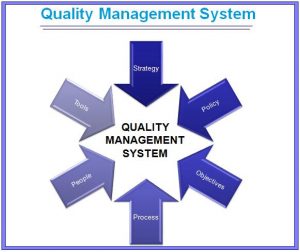 Why ISO?
Why ISO?
Can we undermine importance of quality in business? No way. Quality management is the buzz word in global business. Businesses survive when they make quality their motto. Globally, customers prefer paying for quality products; therefore we see rush for Apple premium products such as iPad, Iphone and Imac, their feel is very good when held in hand. BMW’s business model of selling well-crafted luxury cars in row has become a standard for automobile companies. Ford Motor Company’s total quality management or TQM practices started way back in the 1980s when “Quality Is Job 1” was their slogan.
A quality management system (QMS) is a collection of business processes focused on achieving policies and objectives on quality. It is purely customer centric. Once the quality policy is set in an organization, the organizational structure, policies, procedures, processes and resources needed to implement are put in place. Earlier quality systems would emphasize predictable outcomes of an industrial product production line, using simple statistics and random sampling. By the 20th century, labor inputs were typically the most costly inputs in most industrialized societies, so focus shifted to team cooperation and dynamics, especially the early indications of problems via continuous improvement cycles. In the 21st century, QMS has tended to congregate with sustainability and transparency schemes. The emphasis is laid on sustainability and transparency because both investor and customer satisfaction and perceived quality is increasingly tied to these two factors. ISO has over 19,500 standards touching almost all aspects of daily life. Out of all standards, the ISO 9000 family of standards is probably the most widely implemented worldwide.
 The International Organization for Standardization, known as ISO, is an International Standard setting body composed of representatives from various national standards organizations. It was founded on 23 February 1947; the organization promotes worldwide proprietary, industrial and commercial standards. It is headquartered in Geneva, Switzerland, and works in 164 countries.
The International Organization for Standardization, known as ISO, is an International Standard setting body composed of representatives from various national standards organizations. It was founded on 23 February 1947; the organization promotes worldwide proprietary, industrial and commercial standards. It is headquartered in Geneva, Switzerland, and works in 164 countries.
ISO standards are a guide that can help transform company’s quality system into an effective system that meets and exceeds customer expectations. Once the certification is acquired, an organization needs to adhere to the quality norms, and with implementation of the same the internal and external benefits accumulate over time. The processes are aligned with the organization’s policies and goals and with customer expectations; therefore forming a more organized working environment for both management and employees. While product and service quality will improve, it decreases wastes and defects in the entire system. Process improvements help to motivate employees and increase staff participation. Products and services become continually improved. All of these internal benefits continually drive better financial results, hence creating more value for a business.
As for the external benefits, ISO certification shows the customers and the world that quality is certainly the motto of the business house. Besides this the organization has the opportunity to increase its competitive advantage, retain and build its customer list, and more easily respond to market opportunities around the world.
 I have seen this: once the organization goes in for ISO certification, it automatically becomes a Learning Organization. The processes of ISO compel the management and employees learn to add skill to create, acquire and transfer the knowledge. The ISO certification process help the firms cultivate tolerance, foster open discussion, and think holistically and systemically. The atmosphere in organization fosters continuous learning which makes the working force capable to adapt to the unpredictability more quickly than their competitors. It helps them confront bottlenecks in the business line.
I have seen this: once the organization goes in for ISO certification, it automatically becomes a Learning Organization. The processes of ISO compel the management and employees learn to add skill to create, acquire and transfer the knowledge. The ISO certification process help the firms cultivate tolerance, foster open discussion, and think holistically and systemically. The atmosphere in organization fosters continuous learning which makes the working force capable to adapt to the unpredictability more quickly than their competitors. It helps them confront bottlenecks in the business line.
The definition of learning organization is: an organization that acquires knowledge and innovates fast enough to survive and thrive in a rapidly changing environment. Learning organization creates a culture that encourages and supports continuous employee learning, critical thinking, and risk taking with new ideas. Such organization allows mistakes, and values employment contribution. It circulates the new knowledge throughout the organization for incorporation into day-to-day activities. Peter Senge, the man who coined “Learning Organization” concept; his vision of a learning organization is as a group of people who are continually enhancing their capabilities to create what they want to create has been deeply influential.
 ISO Certification helps an organization to identify gaps between the business processes. It helps optimized allocation and integration of the inputs (resources), and the current allocation level. It reveals areas that can be improved. Gap analysis involves determining, documenting, and approving the difference between business requirements and current capabilities. Gap analysis naturally flows from benchmarking and other assessments. Once the general expectation of performance in the industry is understood, it is possible to compare that expectation with the company’s current level of performance. This comparison becomes the gap analysis. Such analysis can be performed at the strategic or operational level of an organization. ISO certifications help in analyzing gaps and filling them analytically and scientifically.
ISO Certification helps an organization to identify gaps between the business processes. It helps optimized allocation and integration of the inputs (resources), and the current allocation level. It reveals areas that can be improved. Gap analysis involves determining, documenting, and approving the difference between business requirements and current capabilities. Gap analysis naturally flows from benchmarking and other assessments. Once the general expectation of performance in the industry is understood, it is possible to compare that expectation with the company’s current level of performance. This comparison becomes the gap analysis. Such analysis can be performed at the strategic or operational level of an organization. ISO certifications help in analyzing gaps and filling them analytically and scientifically.
The Standard Operating Procedures (SOP) in ISO certification is an important aspect of a quality system; is does not allow to work in ambiguity. A SOP is a document of compulsory instruction. If deviations from this instruction are allowed, the conditions for these needs to be documented including who gave permission for the alteration and what exactly the complete procedure will be. The original should rest at a secure place while working copies should be authenticated with stamps and/or signatures of authorized persons. A systematically drafted and designed standard operating procedure (SOP) provides directions to all those involved in a particular task. It improves communication, reduces training time, and improves work consistency. This happen because the instructions are clear, well structured leaving no scope to haziness of any kind. The SOP development process is an excellent way for managers, workers, and technical advisers to work together for everyone’s benefit. A very positive sense of teamwork arises when these parties work together toward common goals. The leadership quality enhances; because everyone is assigned work proportionately, with an allotted time line to complete it; helping the leader to concentrate on further strategic thinking and implementation.
 Standard operating procedures used in combination with systematically planned training and regular performance feedback lead to an effective and motivated workforce. Managers and advisers benefit from consistent work performance and predictable results. Workers benefit from increased confidence and a clear sense of achievement.
Standard operating procedures used in combination with systematically planned training and regular performance feedback lead to an effective and motivated workforce. Managers and advisers benefit from consistent work performance and predictable results. Workers benefit from increased confidence and a clear sense of achievement.
I am amazed at the ISO’s coverage in almost all areas of standardization. It has hardly left any area which is not covered under its equivalence program. I am simply astonished. Following are few of the standards which are popular but not known much:
ISO 9000 standards are designed to make sure your products and services meet customers’ needs. ISO 14000 standards family is designed for environmental performance. ISO 22000 inspires standards in food products. ISO 26000 helps organization to operate in a socially responsible way with this standard; it’s designed for the CSR theme. ISO 4217 is designed to avoid confusion when referring to world currencies. ISO 31000 is designed for risk management. ISO 27001 ensure information security standards. ISO 20121 is designed to manage the social, economic and environmental impacts of events. ISO 3166 is for avoiding confusion when referring to countries and their subdivisions. This standard defines codes for the names of countries, dependent territories, and special areas of geographical interest. ISO
ISO 14000 standards family is designed for environmental performance. ISO 22000 inspires standards in food products. ISO 26000 helps organization to operate in a socially responsible way with this standard; it’s designed for the CSR theme. ISO 4217 is designed to avoid confusion when referring to world currencies. ISO 31000 is designed for risk management. ISO 27001 ensure information security standards. ISO 20121 is designed to manage the social, economic and environmental impacts of events. ISO 3166 is for avoiding confusion when referring to countries and their subdivisions. This standard defines codes for the names of countries, dependent territories, and special areas of geographical interest. ISO  50001 helps making energy savings and helps making an organization more efficient in energy usage.
50001 helps making energy savings and helps making an organization more efficient in energy usage.
And, ISO 639 is designed for describing languages in an internationally accepted way. This standard is a standardized nomenclature used to classify all known languages. Each language is assigned a 2-letter (639-1) and 3-letter (639-2 and 639-3), lowercase abbreviation, amended in later versions of the nomenclature. The system is highly useful for linguists and ethnographers to categorize the languages spoken on a regional basis, and to compute analysis in the field of lexicostatistics. Lexicostatistics is an approach to compare linguistics on the bases of quantitative comparison of lexical cognates.
 Globally, water management is the need of the hour. ISO provides global tools to help us manage our shared water resources evenhandedly and durably. Over 1000 ISO standards help us in water standards to
Globally, water management is the need of the hour. ISO provides global tools to help us manage our shared water resources evenhandedly and durably. Over 1000 ISO standards help us in water standards to  build confidence through consensus-based global solutions for good business practice, management of resources, risk assessment, metrics and infrastructure. They facilitate sustainable water management and increase water potential, helping alleviate water scarcity and contributing to achieving the UN’s Millennium Development Goals.
build confidence through consensus-based global solutions for good business practice, management of resources, risk assessment, metrics and infrastructure. They facilitate sustainable water management and increase water potential, helping alleviate water scarcity and contributing to achieving the UN’s Millennium Development Goals.














































